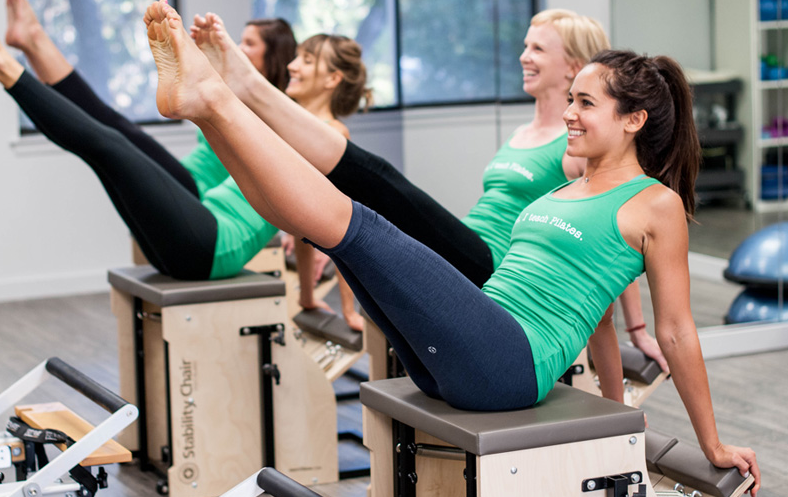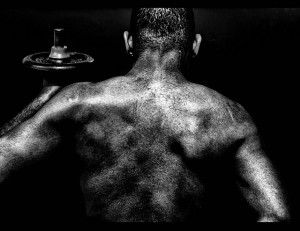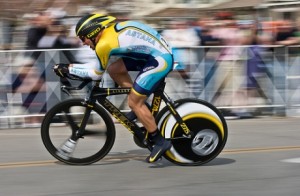
An iron loop
In “The Risk of Training,” we talked about the stress of exercise, and how fitness and health are not synonymous terms. This time we’re going to look at some evidence of how training can have detrimental effects without careful management, and we’re going to start with a substance that is crucial to your existence: oxygen.
Most athletes understand that they must have oxygen in plentiful supply to fuel their training and racing endeavors. Aside from the important issue of training intensity and how it impacts our ability to use oxygen, what about the baseline ability of our body to carry oxygen?
Oxygen is carried in our red blood cells (RBCs), and when our RBCs get low in number it is referred to as anemia. Hemoglobin is the iron-containing molecule found within our RBCs that is largely responsible for transporting oxygen in the blood. Thus, if the number (or percentage) of RBCs in our blood declines, so does our ability to transport and utilize oxygen.
We’ve already talked about the fact that exercise is a stress, and like any other stress, it has its consequences. For athletes, one of the many consequences of regular training is a higher rate of iron deficiency. This can directly impact the ability to form hemoglobin and carry oxygen.
There are many reasons why athletes might be more susceptible to this problem. Chief among them is the fact that during exercise, RBCs shoot through our capillaries at high speed. A capillary is about the size of one RBC, so many RBCs actually break open, or lyse, due to the mechanical stress. When the RBC lyses, the iron-containing hemoglobin within it spills out into the bloodstream.
Athletes produce many acidic substances. One is lactic acid, and another, as a byproduct of aerobic energy production, is excess hydrogen ions (where the “H” in pH comes from, as a measure of your acid/base status).
Guyton’s Textbook of Medical Physiology (a bible of the field if ever there was one) identifies hemoglobin as an extremely potent buffer of acidity. As a result, one idea about why athletes tend to be more iron deficient is that the hemoglobin gets used up as an acid buffer in the normal course of exercise, to be later excreted in the urine.
So how do you know if you’re deficient? A standard check of iron in the blood — your serum iron status — is insufficient. Bodies do a very good job of keeping readily available mineral markers like this steady, making them poor indicators of developing problems until things are really out of hand.
Ferritin, or stored iron, is a much more useful measure. Even with this marker, however, the stated “normal” ranges as listed on laboratory paperwork are much too broad. The ranges you see coming straight from the lab itself are, generally speaking, statistical averages of the entire pool of tests performed.
I know of no athlete who is satisfied with being average. The local office of the mega-lab we send patients to for blood work lists “normal” ranges for ferritin from a low of 10 ng/ml to a high of 291 ng/ml. This range is so wide that you’ll come crawling into your doctor’s office if you fall outside it.
In checking athletes in my office and in work with the University of Texas athletic department, we’ve found that people tend to be symptomatic with ferritin levels below 30 ng/ml. For optimal health and performance, we like to see values above 60 ng/ml.
If you’re an athlete, you owe it to yourself to get this checked. There are many other things that could contribute to an anemic state, impacting your ability to feed much-needed oxygen to your tissues. However, iron status is one of the easiest and cheapest to both check and correct. A simple CBC (complete blood count) along with ferritin shouldn’t set you back more than about $50 at your doctor’s office.
Your doctor should be able to help you select a high-quality, easily absorbed form of iron that will allow you to quickly correct the condition. Getting this checked is doubly important for premenopausal females, who are at an increased risk due to regular blood loss from menstrual cycles.
No matter what you do, keep in mind that your training has consequences! Staying on top of your health and respecting the stress that exercise causes is the best way to ensure longevity in both training and life.









